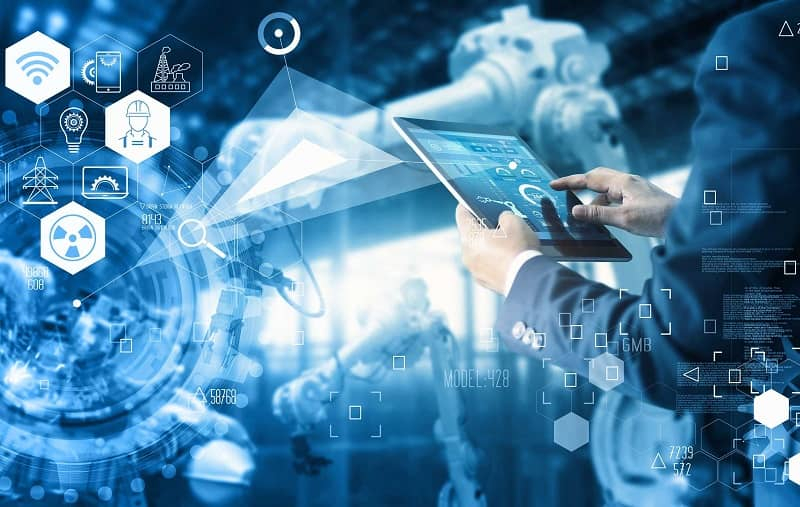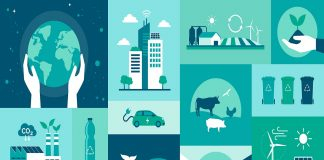The covid-19 pandemic, which will continue to affect our lives in many ways, will be reactivated.
As we enter the new digital technology year, however, sustainability, increasing digital technology trends, data volumes, and network speeds will all be essential drivers of digital transformation.
Many people and organizations have learned that truly transformative change doesn’t require as much effort as they thought.
We will continue to use this openness, flexibility, agility, and innovative thinking as a society to survive and thrive in the changing world.
5 Biggest Digital Technology Trends
Here is how I think it will go regarding the top trends that will mean the most: The key trend wii be the convergence of technology trends and new tools which make these trends even more valuable allowing them to be combined.
#1. Artificial Intelligence everywhere
Smart used to be smart connected phones, smart TVs and other intelligent devices. These devices were toys like, but could link to the internet.
Today, when we hear the term “smart” it is used for devices with AI, often machine learning to assist us to create new solutions.
smartphones can have AI algorithms to control any function from maintaining the call quality to taking better pictures and smartphones are bundled up with builtinapps that make use of AI for almost any task.
Already today self-cleaning toilets that are equipped with complex sensors capable of observing and identifying gastrointestinal diseases with the help of computer vision in the samples are being developed.
It has now become commonplace to see ‘AI’ as part of the tools used to get certain jobs done. This include the daily use smart technologies such as the voice control and language interpreter. We also have tools that parse tables or images, drawings on the whiteboard, and handwritten notes.
AI also underlies a good part of robotic process automation, making it possible to use these tools for light work in operations, administration, supply chain, and the back office including accounting and human resources. Nobody can now work in any given industry without finding an AI solution that can ease their working experience at some point.
All together these technologies provide us with capacities that we did not even dream of several years preceding this. Convergence is likely to emerge as the most important trend on a timeframe longer than the one where it is outright dominant in our thought process here.
The three variables influencing society that one can hazard a guess are the rise of data volumes, acceleration of speed in processors, ‘democratic data.’
#2. Everything-as-a-service and the no-code revolution
In recent years, we have seen a whole industry focus on how to bring as many people as possible the reality of tech-led innovation. Cloud storage, networking and computation provides services that minimize the investment needed in establishing extensive infrastructure that can be used to test new hypothesis.
In those situations where the public cloud services don’t meet your requirements, hybrid solutions can be quite feasible – especially when you are handling valuable and sensitive information.
This sounds like a problem, but it has been an enabler of ‘DIY’ and self-service. A firm does not necessarily have to hire a force of computer engineers to design their ‘digital mind’ when they can simply hire one that will perform the services they require.
The Elon Musk funded research group, OpenAI, has created Codex, a programming system that translates natural language to code.
In particular, new technology such as this will emerge (as we shall witness in the year 2022) which will fuse with cloud infrastructure and in which innovation as well as imagination will be less impeded by the absence of either technical know how or capability.
#3. Digitization, datafication, and virtualization
All of us have experienced the virtualization of offices and workplaces and remote working in 2020 an 2021. This was a one-off, which forms part of a longer process of evolution of PCS.
The concept of metaverse, persistent digital worlds that co-exist with physical world will be a more familiar element with us by the year 2029. These metaverses will become more usable to perform a great many of the functions we take for granted in the real world.
As digitization grows, these spot metaverses will become more precise. This will help make the experiences that we are having more genuine, believable and in the final analysis, more beneficialPage 10 when interacting with technology based content. However, new devices for providing feedback and producing smell could greatly improve it.
It is building an “internet” of senses for which the boundary between simulation and reality will be almost impossible to distinguish by 2030. This might seem to be a little off target of what we are concerned with at the moment.
#4. Transparency, governance, and accountability
Technology can only serve when people believe in it. Readers are likely to find many of today’s technological applications objectionable as invasive, risky or reckless.
This makes AI referred to as a black box that is used when people cannot decipher how it operates. More often it is due to the sheer size than some nefarious idea to stop us learning.
The effect is still the same. Unfortunately these technologies can be designed to cause pain to people; this was recently illustrated by Facebook which labeled some images of black people as ‘primates’. This is especially true because AI is increasingly being used to take critical decisions about individuals, including employment and dismissal.
It has grown popular as it was realized that AI is not transparent and does not require a quick explanation. The act would also ban authorities from using AI in public areas to develop facial recognition systems and social credit systems.
The AI solution providers are compelled to demonstrate that their systems cannot act as instruments of generating harm before they can begin selling their offerings. This includes “taking advantage”, and “abuse that results in psychological or physical effects.”
Critics say that the current version has not been protective enough and that it does not mandate that persons be told when they are affected by AI-based decisions.
Google’s Sundar Pichai said that despite the fact that regulation of AI is necessary, there is a method to make sure that the development of the latter does not halt.
The latter means that, with more people paying attention to how different technologies impact society both negatively and positively, this balance will probably become a focus of more significant concern for the future.
#5. Sustainable energy solutions
Fossil fuel energy use fell globally as operations stopped for industries and as more people isolated themselves at home. By forecast, it will be seen that the future employment predicts more investment in renewable energy.
Comparing the costs of generating renewable energy from offshore wind, solar, tidal and onshore wind ranges between $ 7 and $ 16.
This means that new energy sources such as bio fuels and liquid hydrogen are becoming manageable despite the fact that it will be sometime between now and before the full impacts of these new energy sources are felt.
The California based Helion Energy which is in the business of mimicking the process through which energy is produced in sun beams aims to launch the latest version of its fusion generator.
Feel free to Write for Us about Technology and Follow Us on Facebook.










